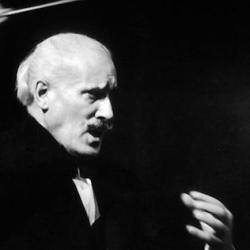Early in his book, Sound and Symbol: Music and the External World , Victor Zuckerkandl is contrasting the phenomenology of sight and sound, and says this about the Greek emphasis on the visual:
“It seems more than mere change that it was among a people so deeply anchored in the visible as a classic Greeks that the idea should be conceived of a supreme being which, in absolute immobility, intangibility, and uniformity, represented the direct opposite of everything living. The peculiar melancholy of the Greeks, too, their feeling for the ephemeral, for the element of transitoriness in life, may be connected with their living so much more in the visible than in the audible. In any case, the road to the heart of the living is more difficulty, and more circuitous, by way of the visible than of the audible.”
Perhaps here we have another root of the Greek penchant for tragedy. As Jim Jordan has often pointed out, visual and iconic civilizations tend to be static (and spatialized), since the visual does not call or compel or confront. Perhaps also iconic cultures tends to be tragic and create myths of degeneracy. Audio-based cultures are dynamic and progressive. Something here, maybe.















